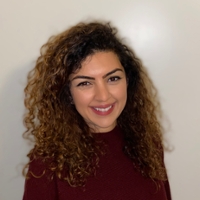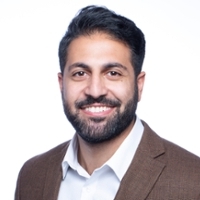Article:
Mohamed B. Elshazly, Menatalla Mekhaimar, and Thurayya Arayssi (2020) Incoming International Medical Graduates and the COVID-19 Pandemic: More Than Meets the Eye. Journal of Graduate Medical Education: June 2020, Vol. 12, No. 3, pp. 269-271.
Summary:
International Medical Graduates (IMGs) have been an integral part of the US health care workforce, representing a quarter of all practicing physicians, including the GME training pool, and make invaluable contributions to patient care, research and education. During the COVID-19 pandemic, the role of IMGs has been imperative with 40% of infectious disease residents and fellows being IMGs. The role of incoming IMGs during this crisis remains crucial, yet IMGs continue to face increasing barriers challenges to integrating into the US healthcare system. These challenges and potential solutions are discussed. For this blog post, Dr. Rama El-Yafawi interviewed first author Dr. Mohammed ElShazly.
Interview:
REY: IMGs have been a part of the US healthcare workforce for decades, so what prompted you to write about this issue now?
ME:Thank you for interviewing me for this fantastic section of ATS.
To start off, IMGs represent almost a quarter of all practicing physicians in the US and they have been essential for many specialties such as IM (25% of IM residents) and infectious disease (40% are IMGs). Unfortunately, due to the COVID-19 pandemic, their transition to US residency programs this summer was expected to be more difficult than usual as they faced several geopolitical, logistical and personal challenges.
In March, President Trump had issued an executive order suspending visa processing services due to COVID-19 and there was concern that this would apply to IMGs, but fortunately, health workers were later identified as being exempt from this ban. Additionally, other governments were imposing travel bans on its citizens and canceling flights to/from pandemic areas such as the US. Furthermore, countries with physician shortages wanted to keep their US-bound physicians so that they can join the local workforce.
Assuming IMGs were able to get through all these geopolitical obstacles, they were still prone to facing several logistical challenges in their move to the US, such as relocation, processing social security numbers, driver’s licenses and so on. Finally, they also had to cope with the emotional turmoil of leaving their home country in times of uncertainty as they were saying goodbye to loved ones, some of whom they may lose to this disease.
Our goal was to spread awareness about these unique challenges within the postgraduate medical education community so that we can all be prepared with flexible and novel solutions to many of these challenges.
REY:Can you tell us more about your experience as an IMG?
ME: As an IMG, my transition to Internal Medicine residency in 2010 was smooth. I faced the usual difficulties of learning a new culture, getting a driver's license and the pain of having to build credit score but my program (Hopkins Osler Residency) was extremely supportive. Despite moving to a new country and being far from any family or friends, Hopkins immediately felt like family. My 7 years of residency and fellowship in the US were just wonderful. The medical training and the people are second to none and I never felt like an outsider. I also loved all my patients and always felt that they respected who I am. The US is truly the land of "possibilities", as Senator Joe Biden says. It gave me the opportunity to receive the best medical education and work with the best doctors in the world.
However, there were some challenges, particularly related to nonimmigrant visa options for physicians and their families, that I hope can be improved over time. Personally, a combination of visa and personal issues made me choose to leave and take a faculty position at my alma mater in Qatar. However, I will be back soon!
REY:Despite the many mentioned challenges and obstacles of IMGs transitioning to US GME programs, what do you think are the advantages of having IMGs in US programs?
ME: There are many advantages to having IMGs in the US. Most of them are exceptionally talented clinicians and physician scientists, who undergo rigorous testing to make it to the US. In essence, the US attracts the best medical graduates from all over the world. In fact, many IMGs are leaders in their respective fields and continue to advance the tripartite mission of academic medicine: clinical care, education and research.
The US has tremendous cultural diversity within its patient population and having IMGs promises similar diversity within the physician workforce. Many IMGs have also experienced working in diverse healthcare systems and academic institutions so they bring with them a wide range of innovative ideas and unique perspectives that can benefit the US healthcare system.
REY:You discussed ways that big institutions such as ACGME, ECFMG and AMA can advocate for IMGs on a governmental level as well as institutional GME support on a local level, but what can program directors do within their training programs to help?
ME: Program directors can be very effective in supporting IMGs on an institutional and national level. First, they can continue to advocate for IMGs and highlight the problems they face to the ACGME, along with innovative solutions. For example, how can we change antiquated visa laws that cause the US to lose many IMGs after investing millions of dollars in their training? How can we ease their moonlighting restrictions and allow them to make extra money like US citizen or permanent resident physicians? Can we facilitate work permits for their spouses? And so on.
Second, programs should work closely with their institution's GME office to ensure that IMGs transition smoothly to the US and that their annual visa renewals are handled efficiently. Easing many of these stressors will allow IMGs to focus their education and patient care.
Third, program directors should consider endorsing national or local IMG committees that review common and contemporary problems facing IMGs and suggest potential solutions.
Fourth, program directors should encourage research that helps elucidate the value of IMGs to the US healthcare system and to the medical sciences. Such data can help in political advocacy and bring about drastic changes in policies and procedures pertaining to IMGs. Finally, I encourage program directors to be empathetic and patient with this group of talented and high-achieving individuals who have left everything behind to pursue the American dream, which promises meritocracy and fairness.
REY: Lastly, what is your response to those who say IMGs are taking jobs that could be filled by American medical graduates, as alleged by a recent NYPOST article?
ME: Unfortunately, this article only scratches the surface of a much more complex problem. For example, it doesn't discuss the fact that most unmatched US graduates have applied to very competitive specialties that generally have low match rates. On the other hand, IMGs tend to fill specialties with a larger number of spots such as IM. So, it's not that IMGs are taking US graduates spots, but that US graduates tend to choose specific specialties that are also very competitive. In addition, many US graduates tend to be selective and apply to only a few programs within their specialty of interest, due to geographic preference, while IMGs may apply to more than a hundred programs within the same specialty.
The article also does not discuss the impact of the recent surge in DO graduates without an increase in residency spots. It is important to mention that while taxpayer money is spent on ACGME programs training IMGs, IMGs also pay taxes like US citizens or permanent residents.
The bottom line is that IMGs are truly invaluable in providing quality patient care, contributing to medical education and research, and promoting diversity.

Blog post author
Dr. Rama El-Yafawi is a Pulmonary Critical Care physician at AMITA Health in Chicago, IL. She completed training at Virginia Commonwealth University and Maine Medical Center. Her academic interests include inpatient management of pulmonary embolism, quality improvement, healthcare disparities and promoting women in medicine.
Twitter: @rama_elyafawi

Article author
Dr. Mohamed Elshazly is a Cardiologist and Assistant Professor of Medicine at Weill Cornell Medicine-Qatar. He completed training at Johns Hopkins and Cleveland Clinic. Dr. Elshazly's research interests include digital health and the prevention of cardiovascular disease. He is also a biotech entrepreneur and has recently founded EMBER Medical in the US, a Telehealth company building software tools that empower clinicians to remotely engage with patients.
Twitter: @mbelshazly



